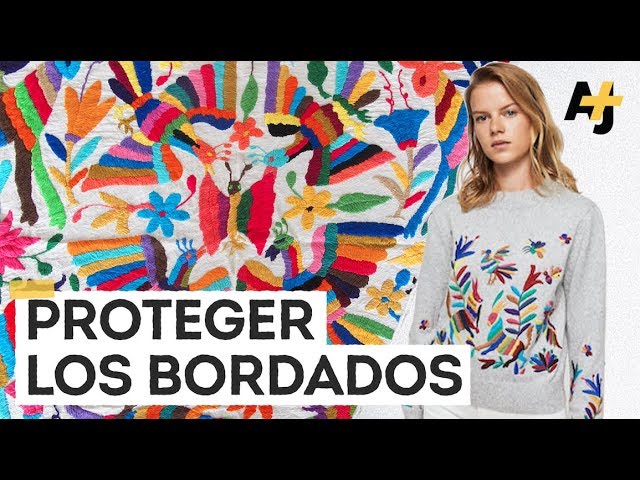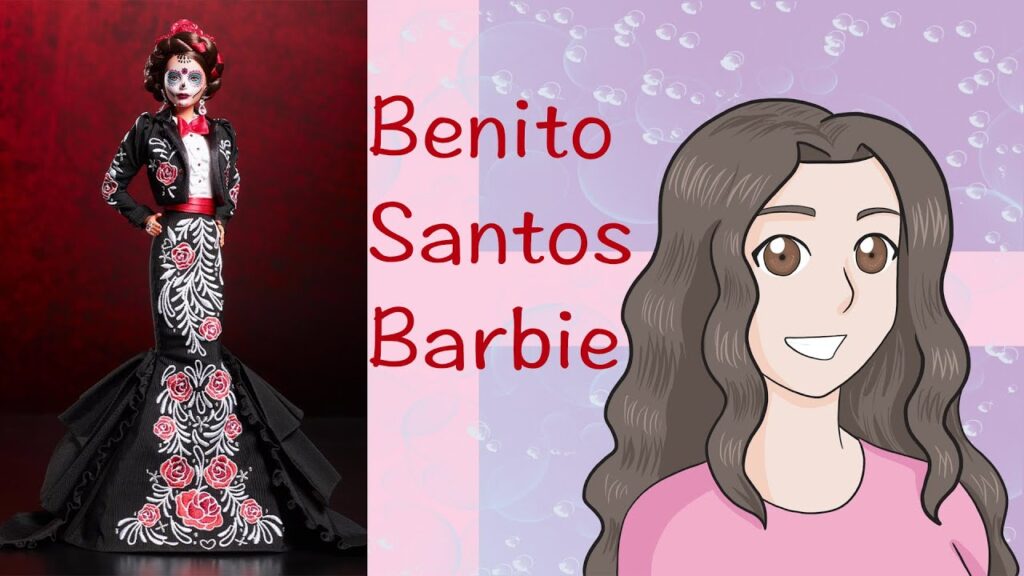The Cultural Appropriation Controversy: Louis Vuitton and Tenango de Doria Embroideries
In the realm of fashion, cultural inspiration can sometimes cross the delicate line into cultural appropriation. This was the case when luxury fashion giant Louis Vuitton found itself in the midst of a heated debate. The controversy emerged from the brand’s use of traditional embroidery designs, which bore striking resemblance to those crafted by the indigenous community of Tenango de Doria, located in the heart of Mexico.
The intricate patterns and vibrant colors of Tenango de Doria’s embroideries are deeply rooted in the region’s cultural heritage, with designs often telling stories and representing elements of the natural world. These embroideries are more than just decorative art; they embody the history and identity of the community. When Louis Vuitton’s 2019 collection featured similar motifs on a luxury chair, it prompted a discussion about the fine line between cultural homage and exploitation.
Unlike other instances of appropriation, the controversy here was not about an abstract use of color or pattern, but about the replication of specific designs that have been passed down through generations in Tenango de Doria. Artisans from this region have honed their craft over centuries, and many felt that Louis Vuitton’s act disregarded their intellectual property rights and did not acknowledge the rich tradition behind the embroideries.
The people of Tenango de Doria have voiced concerns over the lack of compensation and recognition for their cultural contributions. This has sparked a broader conversation about how the fashion industry, known for its relentless search for new ideas, engages with traditional arts. Advocates for the community call for fair practices that respect the source of inspiration and ensure that the original creators are acknowledged and benefited by the exchange.
This situation has shed light on the complexities surrounding cultural exchange in the global fashion industry. It drives the need for a balance between creative interpretation and cultural sensitivity. As brands like Louis Vuitton look to the rich tapestry of world cultures for inspiration, many now argue that partnership and collaboration with local artisans should be the standard. This approach could help prevent the erasure of cultural significance and provide a platform for these native arts to thrive on an international stage.
Understanding the Unique Craftsmanship of Tenango de Doria’s Artisans
Tenango de Doria, a small municipality in the state of Hidalgo, Mexico, is world-renowned for its vibrant and intricately detailed embroidery. The local artisans have preserved a tradition that goes back generations, creating a visual language that is both captivating and distinct. Their textiles are adorned with colorful threads that depict the natural world in dazzling complexity, from flora and fauna to elements of daily rural life. Each piece is a testament to the patience and skillful artisanship of the women and men who dedicate countless hours to sustaining their cultural heritage.
The process of creating a Tenango embroidery begins with the careful selection of fabric and threads. The artisans typically use cotton or muslin as their canvas, carefully sketching out their designs before the needle ever pierces the material. It’s a meticulous task, and the choice of colors is not incidental but rather deliberate, designed to portray the vibrancy and diversity of life in Mexico. The threads themselves are like a painter’s palette, with a range of hues that bring a dynamic quality to each piece.
Traditionally, the themes showcased in Tenango textiles are communal narratives, encapsulating the stories and legends passed down through generations. The rich motifs often have a magical quality, with mystical creatures coexisting alongside farm animals and indigenous plants. This integration of the fantastical with the real offers insight into the community’s worldview and the significant role that storytelling plays in the preservation of their culture.
What sets Tenango embroidery apart from other crafts is the combination of community and individual expression. While there is a shared language in the symbolism and techniques used, each artisan brings their own personal touch, ensuring no two pieces are exactly alike. It’s this unique blend of collective tradition and personal artistry that makes the handcrafted works from Tenango de Doria a fascinating subject for anyone interested in the world of art and cultural heritage.
How Heritage and High Fashion Collide: The Case of Mexican Embroideries
Mexico’s rich cultural tapestry is vividly expressed through its traditional embroideries, which have been passed down through generations of artisans. Embedded in the colorful threads and intricate patterns is a story of cultural identity and heritage that is quintessentially Mexican. As they are woven into the very fabric of traditional clothing, these embroideries tell tales of communal narratives, spiritual beliefs, and regional styles that vary as much as the country’s diverse geography.
However, the allure of these embroideries has not gone unnoticed by the global fashion industry. High fashion designers have found inspiration in the vibrant hues and unique designs of Mexican textiles. The integration of these traditional patterns into contemporary fashion lines has sparked a dialogue between respecting heritage and embracing the modern era’s fashion trends. It raises a crucial question: how can fashion honor the source of its inspiration while paving the way for innovation?
In recent years, collaborations between Mexican artisans and international fashion houses have surged. These partnerships aim to preserve the authenticity of the craft while bringing Mexican embroideries to new audiences. Artisans receive recognition and fair compensation for their work, highlighting the importance of ethical practices in fashion. This has introduced a new model where tradition and trend coexist, bringing forth a newfound appreciation for the artisanal handwork that makes Mexican textiles so remarkable.
Yet, the conversation continues regarding cultural appropriation and the importance of giving due credit to the original creators of these designs. As fashion continues to explore the boundaries of cultural influence, the case of Mexican embroideries serves as a poignant example of how heritage can be harnessed to inform, inspire, and elevate high fashion. It is a dance between honoring history and reinterpreting it for the contemporary wardrobe, exploring how both worlds can not only collide but come together harmoniously.
Louis Vuitton’s Collection: Inspiration or Plagiarism?
The debate about the fine line between inspiration and plagiarism has once again come into the spotlight with Louis Vuitton’s recent collection, which appears to borrow heavily from traditional Mexican designs. Critics argue that the luxury fashion house has appropriated cultural symbols that hold significant meaning to the communities they originate from, in particular indigenous communities in Mexico. The vibrant colors and intricate patterns, rooted in the heritage of these cultures, are undeniably beautiful, but their use by a global powerhouse like Louis Vuitton raises profound questions about cultural sensitivity and respect.
Defenders of the collection assert that fashion has always been about borrowing and taking inspiration from a wide array of sources. They suggest that Louis Vuitton’s use of these designs serves to celebrate and elevate Mexican artisanry on a world stage, potentially opening up new markets and opportunities for the original creators. Furthermore, they point to collaboration efforts where the fashion house has worked with local artisans, aiming to keep the traditional crafts alive and relevant. Yet, whether the collaboration is truly equitable and respectful remains a subject of intense discussion.
On the other side of the argument, many people believe that such acts by high-end brands contribute to cultural erosion and commodification. The original creators of these designs, who often continue to live in marginalized conditions, typically do not receive recognition or fair economic compensation. This raises the issue of intellectual property rights and whether the indigenous communities have the means or legal framework to protect their cultural heritage from being exploited. The narrative often changes when observed through the lens of ethics, transforming the conversation from one about aesthetics to one about justice and propriety.
Preserving Traditional Art: The Importance of Authenticity in Design
The fabric of Mexico’s cultural heritage is richly woven with traditional art forms that have been passed down through generations. From the intricate beadwork of the Huichol people to the vibrant textiles of Oaxaca, each piece tells a story of the community from which it emanates. Authenticity in design is crucial in keeping these stories alive. It ensures that traditional methods are preserved in their truest form, maintaining a link to history and identity that is often lost in the mainstream adaptation of culturally significant designs.
Authentic designs are not only vital to cultural preservation but also to economic sustainability. When artisans create pieces that are true to their heritage, they are keeping centuries-old craftsmanship techniques alive. These skills provide livelihoods for local communities and contribute to the continuation of artisanal education. Buying authentic, traditionally-made objects supports this economy directly, shifting the focus from mass-produced souvenirs to genuine artifacts that hold a much deeper significance.
Moreover, the authenticity of design plays an essential role in conveying the spirit and values embedded in traditional art. Each pattern, color, and shape used in authentic creations is imbued with symbolism and reflects the worldview of the culture it represents. When these elements are reproduced without appreciation or understanding, the end result lacks the soul and intention of the original, leading to a dilution of meaning and a loss of cultural context that can sometimes result in cultural appropriation.
Finally, promoting and preserving authentic design helps to celebrate diversity and encourages cross-cultural respect. It can foster a global appreciation for the unique aesthetics and philosophies found in Mexican traditional art, promoting unity through shared admiration. This, in turn, can pave the way for a more inclusive world where cultural expressions are honored and safeguarded, allowing future generations to enjoy and learn from the rich tapestry of human creativity and history.



